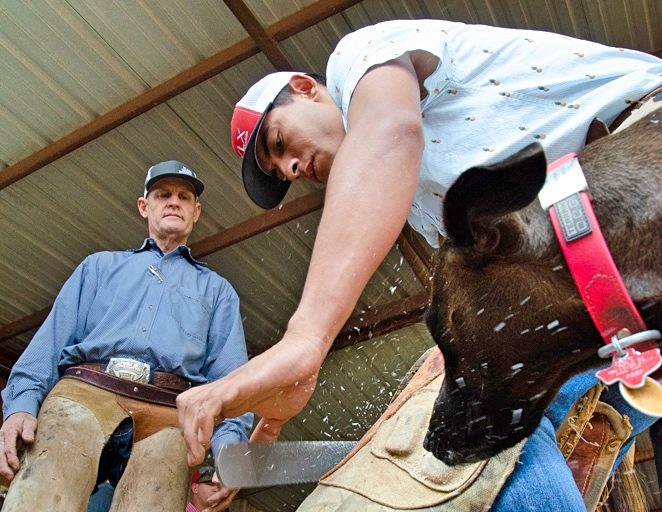A helping hand can make a big difference for a farrier’s practice and quality of life, yet very few take advantage of the opportunity.
The 2020 Farrier Business Practices Study conducted by American Farriers Journal found that only 78% of farriers do not regularly work with apprentices. Why? Another AFJ poll found that 75% of farriers find that it’s typically a struggle finding and retaining apprentices. Coincidence? Probably not.
International Horseshoeing Hall of Fame member Dave Farley and his son Jay Farley operate a highly successful farriery business in Coshocton, Ohio, and Wellington, Fla. They couldn’t do it without the help of associates.
“A farrier’s career is so limited, to begin with,” Dave Farley says. “When they don’t have a good, qualified associate, their longevity and income are limited. I see farriers who are a lot younger than me who struggle physically.”
The benefits of hiring an associate don’t end with improved health, it improves your bottom line, as well. Hiring good associates can easily double a farrier’s longevity in the industry because they do 50% or more of the labor. They also can potentially increase your volume from 25% to 110% a day. Yes, you read that correctly.
“If a farrier does four horses in an 8-hour day by themself, then each horse would be 25% each,” he says. “If the farrier hires a new associate and does one to two more horses in the same amount of time, the profit increases.”
Granted, a new associate takes time to get up to speed. However, when they do, the dividends will kick in.
“The real secret is in organizing the horse, pulling and clinching,” Farley says. “If a farrier invests time into teaching the associate time management each day, after about a year they should be doing two to three more horses each day in the same amount of time. This increases profit by at least 50%.”
A truly experienced farrier such as Jay sends those numbers through the proverbial roof.
“My son increases our profit at least 125% each day because he is at the top of the associate ladder,” Farley says. “Not only does he do 50% of the labor, but he also does the records and scheduling. When we pack the trailer, he has already sent the information for billing, put our return date on the dry erase board that we provided at the barn. He also communicates with the grooms. At the end of each season, he also collects each trainer’s season show schedule so that we can plan our year ahead.”
Gain more insight on how the Farleys identify, hire and retain good associates, read “Tips for Hiring Better Hoof-Care Help” in the November 2020 issue of American Farriers Journal.









Post a comment
Report Abusive Comment